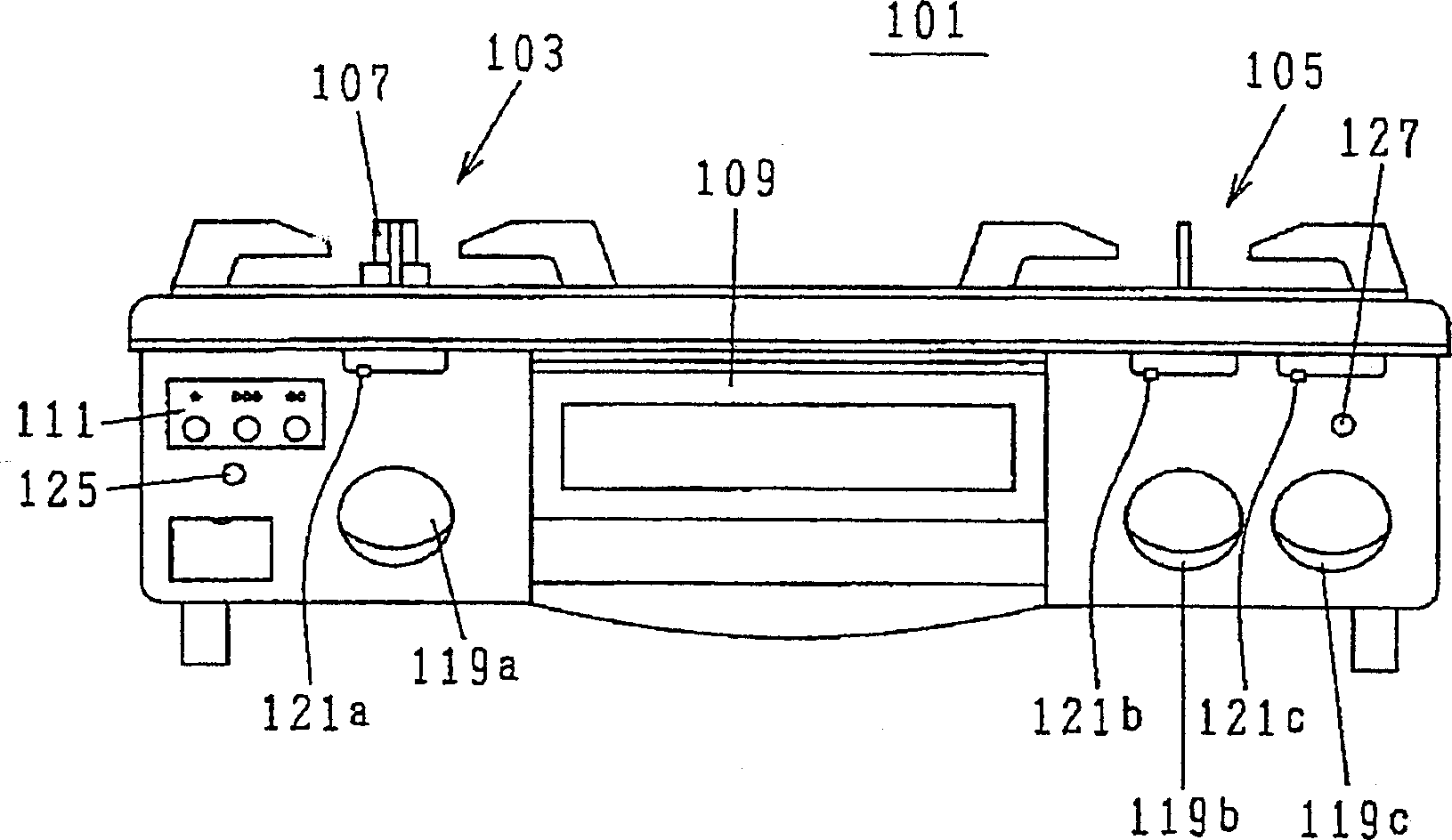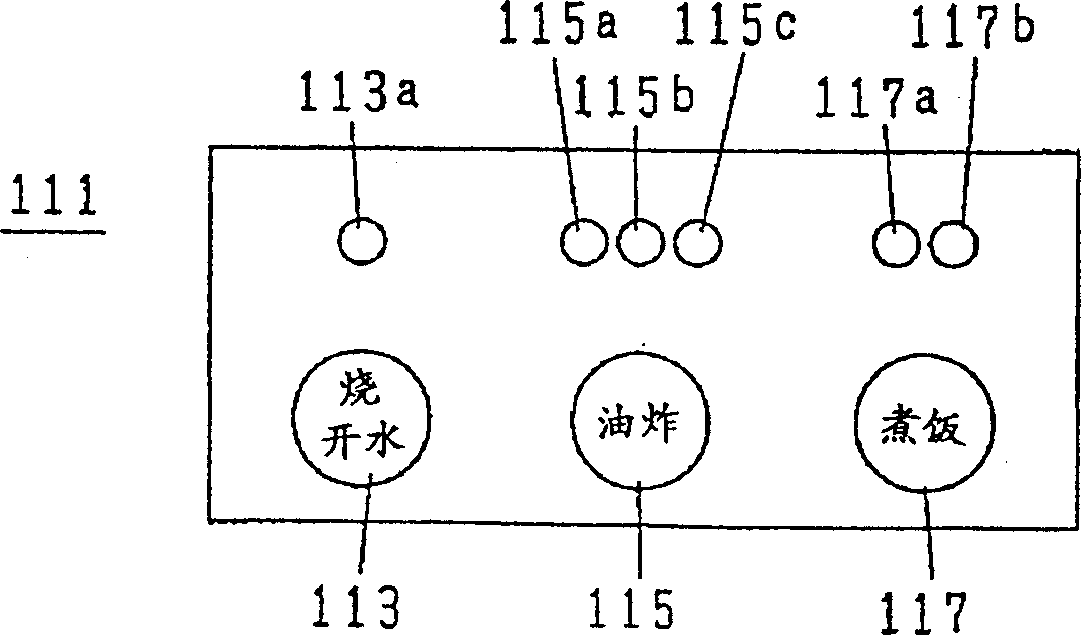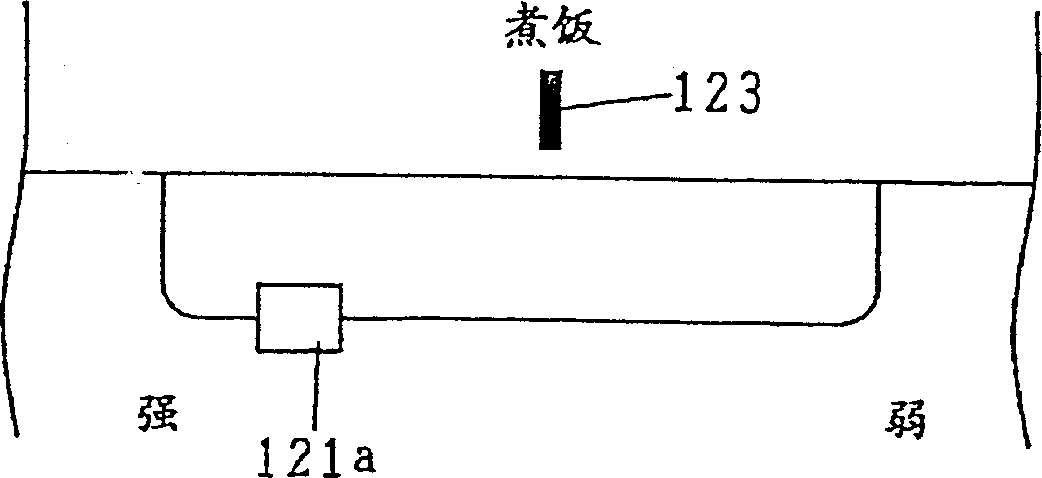Stove with rice cooking function
A technology of stoves and functions, which is applied in the field of stoves with cooking function, and can solve the problems of low thermal conductivity, low heat conduction efficiency, and being turned off
- Summary
- Abstract
- Description
- Claims
- Application Information
AI Technical Summary
Problems solved by technology
Method used
Image
Examples
Deformed example 1
[0146] Figure 26 shows that the time data Δt will also be balanced in the standard mode 2 Flowchart for judging heat power and cooking volume.
[0147] In the standard cooking mode of Figure 12, the data Δt 2 It is only used for pot type discrimination (step 216), but in FIG. 26, as shown in step 302, it is used for discrimination of firepower and cooking amount. That is, in the standard rice cooking mode and the quick rice cooking mode, the data Δt 2 The plate is used to judge the firepower and the amount of cooking.
[0148] Step 303 corresponds to step 222 in FIG. 12 , and enters step 246 in FIG. 14 . Step 304 corresponds to step 220, and enters step 305 corresponding to step 244. Step 306 corresponds to step 245, go to step 261. Step 307 corresponds to step 255, go to step 259.
[0149] It can be seen from Figure 26 that the Δt 2 The results for judging the heat power and the amount of cooked rice, the processing for judging the heat power and the amount of cooked r...
Deformed example 2
[0152] Figure 27 With Figure 16 In the flowchart corresponding to a part of processing, step 401 corresponds to step 247, and step 402 and step 403 are branched from step 401.
[0153] Figure 16 In the above, when the heat power is switched from strong heat to low heat, when MIN+7°C or higher is detected, it is captured as a judgment of whether there is roasting, but in Figure 27 Among them, it is captured as a discrimination of pot thickness. That is, when MIN+7 degreeC or more is detected, it judges that the thickness of a pan is thin, and it progresses to step 403. When not detected, it is judged that the thickness of the pot is thick, and step 402 is entered. When the thickness of the pan is thick, it proceeds to step 248 and judges that it is baked, and when the thickness of the pan is thin, it proceeds to step 249 and judges that it is not baked.
[0154] That is, in the processing here, the rice cooking control with or without roasting is determined based on th...
Deformed example 3
[0157] Fig. 28 is a diagram corresponding to Fig. 14, and is a flow chart for capturing pot thickness judgment as pot thickness and baked presence / absence judgment. Step 501 corresponds to step 244 . Step 502 corresponds to step 245 . Step 503 corresponds to step 255 . Step 504 corresponds to step 259 . Step 505 corresponds to step 261 .
[0158] When the judging result of pan thickness is used for judging whether there is toasting, the result like step 502 or step 503 can be obtained, it is judged as having toasting in step 246, and it is judged as not toasting in step 504 and step 505.
[0159] In addition, step 305 in FIG. 26 may also be used as pan thickness and non-baking discrimination capture, and the setting in step 259 may be no-baked. In addition, if the step 501 of Fig. 28 is taken as the judgment capture of whether there is toasting, then Figure 7 The pot thickness judging part 159 is included in Figure 8 In the presence or absence of baking judging part 16...
PUM
 Login to View More
Login to View More Abstract
Description
Claims
Application Information
 Login to View More
Login to View More - R&D
- Intellectual Property
- Life Sciences
- Materials
- Tech Scout
- Unparalleled Data Quality
- Higher Quality Content
- 60% Fewer Hallucinations
Browse by: Latest US Patents, China's latest patents, Technical Efficacy Thesaurus, Application Domain, Technology Topic, Popular Technical Reports.
© 2025 PatSnap. All rights reserved.Legal|Privacy policy|Modern Slavery Act Transparency Statement|Sitemap|About US| Contact US: help@patsnap.com



